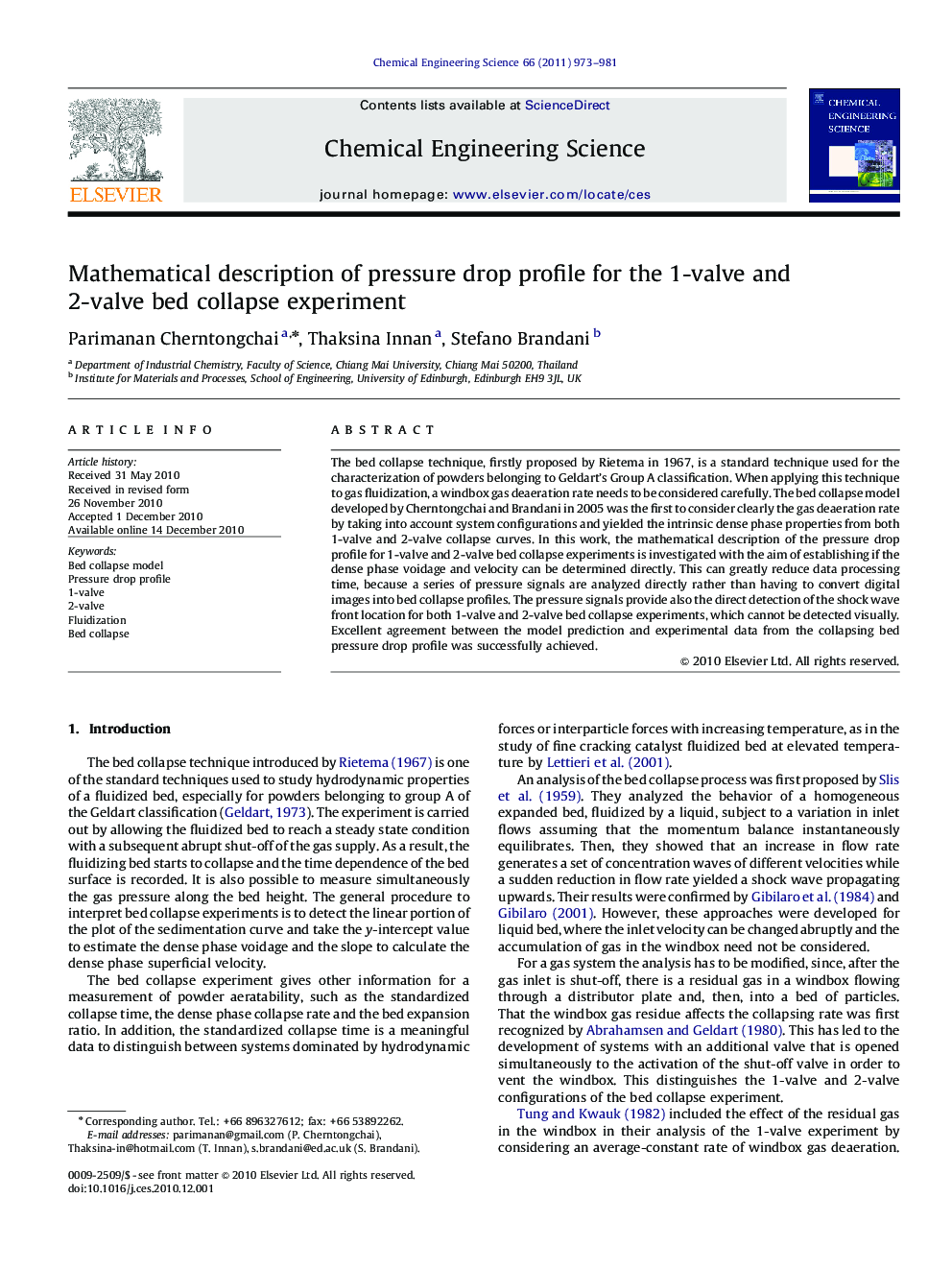| Article ID | Journal | Published Year | Pages | File Type |
|---|---|---|---|---|
| 156452 | Chemical Engineering Science | 2011 | 9 Pages |
The bed collapse technique, firstly proposed by Rietema in 1967, is a standard technique used for the characterization of powders belonging to Geldart's Group A classification. When applying this technique to gas fluidization, a windbox gas deaeration rate needs to be considered carefully. The bed collapse model developed by Cherntongchai and Brandani in 2005 was the first to consider clearly the gas deaeration rate by taking into account system configurations and yielded the intrinsic dense phase properties from both 1-valve and 2-valve collapse curves. In this work, the mathematical description of the pressure drop profile for 1-valve and 2-valve bed collapse experiments is investigated with the aim of establishing if the dense phase voidage and velocity can be determined directly. This can greatly reduce data processing time, because a series of pressure signals are analyzed directly rather than having to convert digital images into bed collapse profiles. The pressure signals provide also the direct detection of the shock wave front location for both 1-valve and 2-valve bed collapse experiments, which cannot be detected visually. Excellent agreement between the model prediction and experimental data from the collapsing bed pressure drop profile was successfully achieved.
